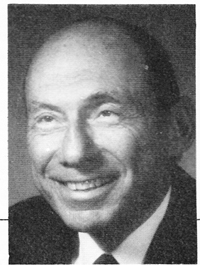A Clear and Present Danger
It is hard to be an optimist these days. It is easy to be a pessimist, and there are indications that the majority of orthodontists are not confident about their ability to maintain their level of case starts or income. But this is not a time for either optimists or pessimists. This is a time for realists.
There is a very important message for orthodontists in Bud Schulman's Orthodontic Economic lndex in this issue. A potential time bomb is ticking away in the average orthodontic practice. The explosive charge is the leveling off of fees in 1982 and 1983. The fuse is lit. The timer is set for 1984-1985.
Some people may take comfort in the general flatness of the numbers for 1982-1983 in Bud's annual index chart, which is made so striking by the graph on the cover of this issue. The rise in the consumer price index and costs decelerated noticeably, which is favorable. The rise in gross income also decelerated noticeably, which is not good. Costs and profit as percentages of gross income and profit in dollars also leveled off. Profit in 1970 dollars, which had leveled in 1981 and 1982, resumed its downward glide. But the worst news is about fees. Fees leveled off in the past two years, and that may have some unpleasant consequences for the average orthodontic practice.
There have been only two really good years for orthodontists in the past nine, since 1974 when Bud Schulman's records went on an annual basis. One was 1979 and one was 1981. They would have been even better years if they had not been accompanied by steep rises in costs and inflation. But they were fueled by excellent fee increases that started in 1976 and continued to 1981. The suggestion is that, because of the installment plan method of payment in orthodontics, it takes a couple of years for the full effect of a substantial fee increase to be realized.
If that thesis is correct, what happened in 1982 and 1983 so that the continued substantial fee increases did not continue to fuel comparable increases in gross income and profit? The groundwork was laid by the extraordinary increase in costs in 1981, accompanied by a continuing high inflation rate. It caused profit as a percentage of gross income to take its sharpest drop in the nine-year period, and this carried over into the next two years.
Competition was an additional important influence. A consequence of increased competition was the leveling or decline in case starts reported by a majority of orthodontic practices responding to the 1983 JCO Orthodontic Practice Study. The competition came from other orthodontists; from general dentists and pedodontists; and to some extent from advertising practices, franchises, clinics, HMOs, PPOs, and capitation programs.
Orthodontists responding to the JCO Practice Study reported that they could have handled an average of 50 more patients without increasing the size of their staffs or facilities. They also reported treating an average of 350 active cases. Assuming there were approximately 8,000 orthodontists, they were treating about 2,800,000 patients. If each orthodontist could have handled 400 active cases, and the 2,800,000 under treatment were divided by 400 active cases, rather than the actual 350 each, that case load could have been handled by about 7,000 orthodontists. It would be an oversimplification to say that there are, therefore, 1,000 too many orthodontists, but it would not be surprising if the truth were close to that number. Nevertheless, the number of orthodontists is increasing by a net of about 120-130 per year, and there is no sign of a decline in that number. One could conclude that competition among orthodontists is a real and growing problem.
GPs and pedodontists appear to be treating increasing numbers of orthodontic patients. The various forms of advertising practices and capitation practices have yet to exert the full extent of their competitive influence, but have contributed to the competition felt by orthodontic practices in many parts of the country. In addition to competition in the professional marketplace, there is a growing competition for the consumer dollar in the overall marketplace. Local economic conditions appear to be playing an increasing role in the economic well-being of orthodontists.
In light of a leveling or diminishing number of case starts, a leveling off of fees has added importance for the future. Since payment of orthodontic fees is still predominantly on an installment basis--and there are indications that the time of the average contract may be lengthening--the effect of the leveling of fees and case starts can be expected to be felt for at least another two years. Just as it took two years for substantial fee increases to be reflected in increased gross income and profit dollars, so can the leveling of fees be expected to have a negative impact two years later in level or lower gross incomes and profit dollars.
With inflation apparently on the rise, and costs continuing to increase, the future economic health of the average orthodontic practice is in jeopardy. The mathematics of the economics of orthodontic practice simply cannot stand a leveling or decline in case starts and a leveling of fees, in the face of increased costs and inflation at any level.
The message is absolutely clear for those who face reality, and the solution is equally clear for those who wish to rise above the implied economic decline. Orthodontists must immediately take steps to raise fees 8-9% a year, as they did in the 1976-1981 period. This will have the most immediate impact on the situation. Simultaneously, they must institute measures to increase referrals and case starts. This is a longer range program, but it will be the surest basis for a sound practice in the future.


